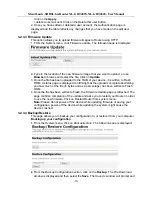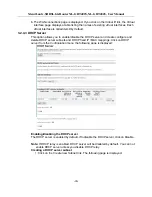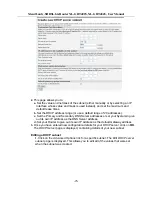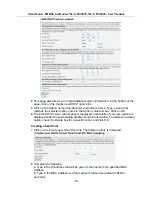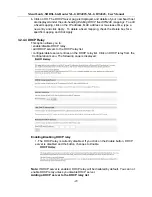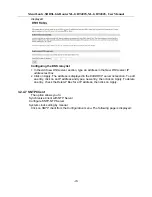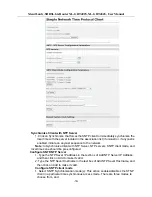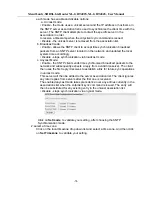
XtendLan G.SHDSL.bis Router XL-GRT402S, XL-GRT404S, User Manual
select a file in which to save your backup configuration. Click on
Save
.
Restoring your configuration
1.
From the
System
menu, click on
Backup/restore
.
2.
In the
Restore Configuration
section, click in the
Configuration File
text box and type
the network path of the file that you wish to restore. If you do not know the path
details, click on Browse and locate the file using the
Choose file
box.
3.
Click on Restore. The page is refreshed with a
Configuration Restored
message and
details of the number of bytes uploaded.
3.2.3.5 Restart
This page allows you to restart your Router. It has the same effect as resetting your
Router by pressing the appropriate reset button on the hardware.
1. From the System menu, click on
Restart Router
. The following page is displayed:
2.
Click on Restart to reset your Router. The
Restart
page also provides you with the
option of restarting and
restoring the factory default settings. Click in the
Reset to
factory default settings
box to check it, and then click on the Restart. Read the
console status output to check how the reset is progressing.
3.
Once the login and password prompt is displayed at the console, you can login as
usual (with login =
admin
, password =
admin
), then refresh the browser that is running
Web. The
Status
page is displayed and your Router has been reset.
3.2.4 Configuration pages
The Configuration menu contains options for configuring features on ROUTER
including basic LAN and WAN connections and DHCP and DNS settings.
Note:
Most of the features contain sensible default settings. You are unlikely to have to
reconfigure every feature included in the Configuration menu. From the left-hand menu,
click on
Configuration
. The following sub-headings are displayed:
• LAN connections: allows you to edit your LAN port IP address, create and edit a
secondary IP address and create new LAN services.
• WAN connections: allow you to create, edit and delete WAN services.
• DHCP server: allow you to enable, disable and configure your DHCP server.
-19-














